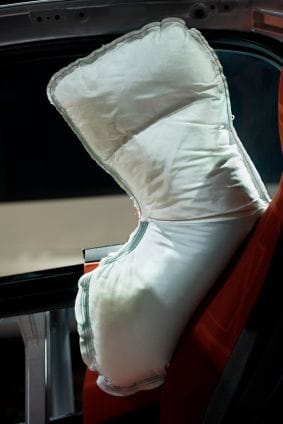How Airbags Work
 Airbags are designed to deploy only when they might be needed to prevent serious injury. In order for airbags to be effective they must deploy early in a crash. In a frontal crash this typically occurs within the first 50 milliseconds (0.05 seconds) so airbags typically deploy within the first 10 - 20 milliseconds of a crash.
Airbags are designed to deploy only when they might be needed to prevent serious injury. In order for airbags to be effective they must deploy early in a crash. In a frontal crash this typically occurs within the first 50 milliseconds (0.05 seconds) so airbags typically deploy within the first 10 - 20 milliseconds of a crash.
A vehicles airbag control module relies on feedback from crash sensors to predict whether an event is severe enough to warrant an airbag deployment. Because of the small space between an occupant and the side of the vehicle, side airbags must deploy very quickly to cushion occupants from vehicles or objects.
"Must deploy" thresholds can be as low as 12 km/h for narrow object crashes (e.g. trees and poles) and 30 km/h for the more distributed side crashes (e.g. vehicle-to-vehicle crashes).
Airbags were first installed in the dash and steering wheel. Now airbags are being fitted into door panels, the roof and into the side of seats. Some side airbag systems protect only the torso (chest, abdomen, and pelvis), some protect only the head, and some protect both the head and torso. Airbag systems that protect both the head and torso provide optimal protection.
Inter seat airbags are a recent innovation in airbag technology. For front seat passengers a lattice like airbag extends from between the front seats to keep the driver and the front passenger apart. The seat mounted inter seat airbag has the advantage that the protective barrier adapts itself to the position of the front seats. For rear passengers seat position is not an issue, so a protective pad above the centre armrest is used when an accident is detected.
These airbags help to control occupant movement during the rebound phase of a crash. Airbags are also now being fitted into seats between the driver and passenger to avoid passengers hitting each other during an accident. Airbags are even beginning to be fitted into the sash of seat belts to better cushion passengers during a crash.
Deploy Safe seat covers with its special thread and computerised stitching process allows airbags to break through the seat cover seams regardless of where and how airbags are fitted.
For more information about buying a safe car click here
